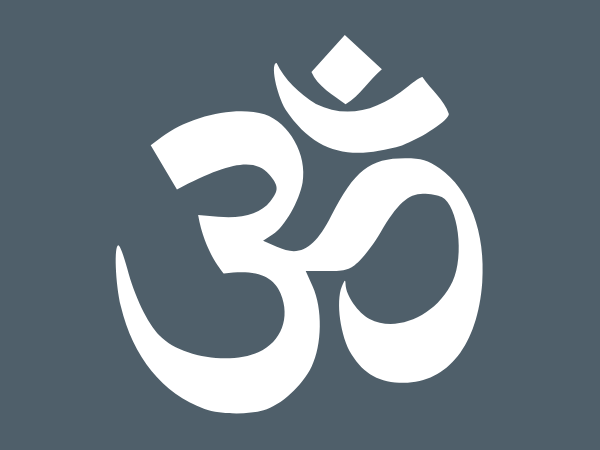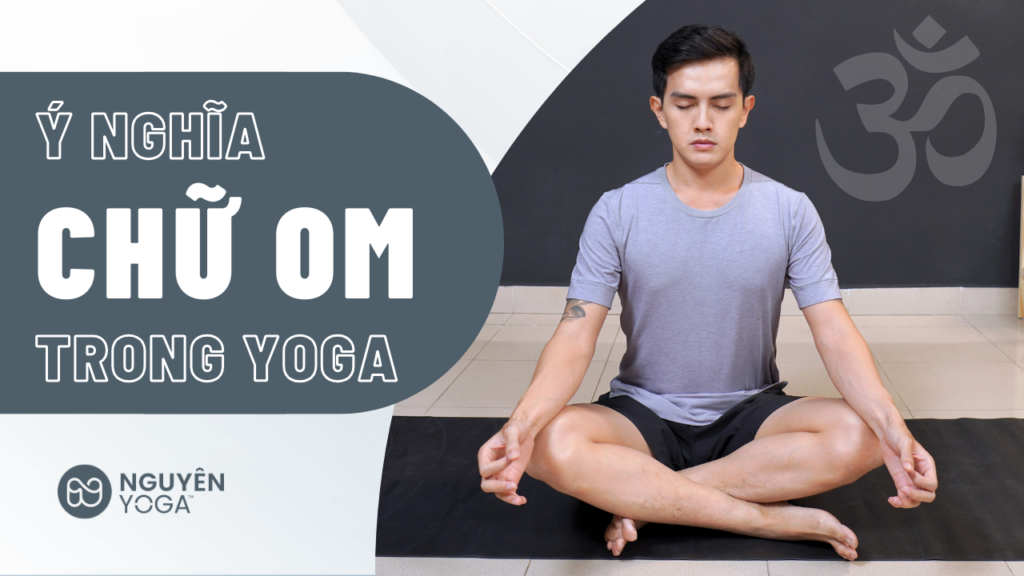In the world of Yoga, Om (or Aum) is not simply a common sound, but also a symbol that holds spiritual and cultural depth. From modern Yoga classes to the roots of ancient Indian philosophy, Om is the bridge between the physical and the spiritual, between the individual and the universe. This article will help you discover the meaning word in Yoga Om, the benefits of chanting, the correct way to practice, and its influence go beyond Yoga movements.
What is the word Om in Yoga?
Om (or Aum) is a sacred syllable, an important symbol in Yoga and the spiritual traditions of Hinduism and Buddhism. This primordial sound is said to represent the vibrational frequency of the universe, carrying with it the power to connect humans to their true nature and harmony with all things.

History and Origin of Om in Yoga
The word Om (or Aum), considered the sacred primordial sound in Indian spiritual traditions, holds profound significance for yogis. The official origin of Om is still a subject of debate, but the earliest recorded appearance is in the ancient Upanishad texts, dating back more than 3000 years. Most prominently, the Mandukya Upanishad focuses entirely on the analysis of Om and its diverse meanings.
Over the centuries, Om has been associated with many different religions and beliefs. In Hinduism, it symbolizes Brahman – the Supreme Being, the essence of absolute reality. Om is also important in Buddhism and Jainism, religions that also originated in India.
The association of Om with Yoga is specifically reinforced in the Yoga Sutras of Patanjali. This classic text lays out the eightfold path of Yoga, mentioning the chanting of Om as a way to achieve spiritual concentration and understanding. From here, Om becomes an indispensable part of Yoga practice, bringing practitioners to a state of deep connection with the universe and their own true nature.
Meaning of Om
- Three syllables, three states of consciousness: “A” represents the waking state, “U” is the dreamy state, “M” is the deep sleep state. The silence after the “M” sound represents a state of pure consciousness, union with the source.
- Past, present and future: Om encompasses the entire flow of time, containing beginning, existence and ending.
- Hindu divine trinity: In Hinduism, Om is considered to represent the three supreme gods: Brahma (god of creation), Vishnu (god of protection) and Shiva (god of destruction).
Benefits of Reciting Om in Yoga
Reciting Om while practicing Yoga will bring many benefits as follows:
- Focus your mind: The sound of Om helps Yoga practitioners concentrate, eliminate distracting thoughts, and prepare for deeper practice.
- Links to breathing: Focusing on reciting Om combined with deep breathing helps practitioners become more aware of their breathing - the foundation of Yoga.
- Create a feeling of peace: Om's vibrational frequency has a positive impact on both the body and mind, bringing relaxation and reducing stress and anxiety.

Mantra (Magic Sentences Mantra Common With “Om”
- Om Shanti: The mantra of peace, usually recited three times, symbolizes peace in the body, mind and spirit.
- Om Mani Padme Hum: One of the most famous mantras in Buddhism, associated with Avalokiteshvara, the bodhisattva of compassion. This mantra is related to the opening of the mind and brings a feeling of calm and purification.
- Om Namah Shivaya: The Sanskrit mantra for the Hindu God Shiva, roughly translates as “I bow before Shiva.” This Mantra represents transformation, freedom from personal limitations and progress towards true nature.
- Om Gam Ganapataye Namaha: This is a mantra to pray to Lord Ganesha - the elephant-headed god in Hinduism, a symbol of removing obstacles and bringing a favorable start.
Use in Yoga
These mantras are often recited at the beginning or end of a Yoga session. The purpose is to create sacred space, establish concentration, or bring about a feeling of wholeness and calmness after practice. In addition, practitioners also use mantra as an independent tool for meditation.
How to Recite Om
- Standard pronunciation: The Om sound is emitted from the lower abdomen: “A” starts at the back of the throat, gradually transitions to a “U” sound in the roof of the mouth, and ends with a long “M” sound with the lips gently closed. .
- Comfortable position: Sit cross-legged with your back straight, close your eyes or focus your gaze on one point. Place your hands on your thighs, palms facing up or make appropriate Mudras.
- Transformation: Start by reciting Om loudly and clearly, then gradually lower the volume until there is only an internal echo.
- Combined with Yoga class: Om chanting is often practiced at the beginning and end of a Yoga session to create a sacred space and help the practitioner fully connect with the practice.
The Power of Om Goes Beyond the “Yoga Mat”

- Meditation: Om is a useful tool in meditation. This focus on sound and vibration helps the mind move away from everyday thoughts, moving towards deep inner stillness.
- Spread in life: Bringing the frequency of peace and sense of connection that Om creates into daily life helps practitioners face challenges with more clarity and calmness.
- Spiritual symbol of Yoga: Om is not just a sound but also a visual symbol. Stylized images of Om are often seen in Yoga studios, on jewelry or clothing, reminding of the spiritual depth of Yoga.
Reciting Om, like the Yoga journey, is a personal practice. By regularly chanting and contemplating the meaning of Om in Yoga In this way, Yoga practitioners gradually open up a deeper awareness of themselves and their connection to the world around them. Hopefully this article has provided a comprehensive and useful insight for you about Om in Yoga.



